Less Driving, More Living
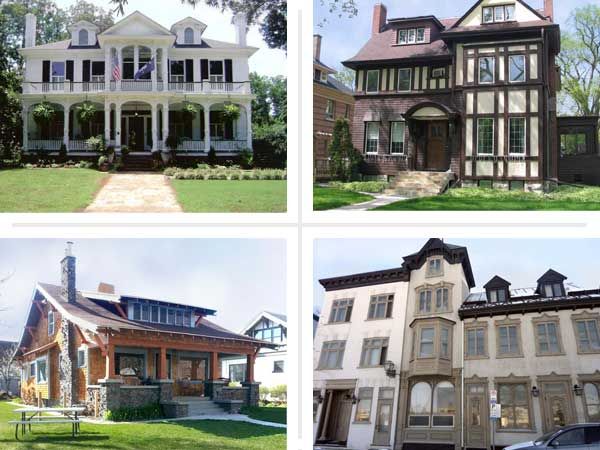
Let’s face it: Sitting in traffic is no one’s idea of a good time. These neighborhoods, all within or close to major employment centers or along public-transit routes, make quick work of getting to work. And they’re just a fraction of the 61 vibrant neighborhoods from coast to coast where you’ll find one-of-a-kind period houses. Read on to learn more about places that are a commuter’s dream, or see all the neighborhoods and categories.
Norwood, Birmingham, Alabama
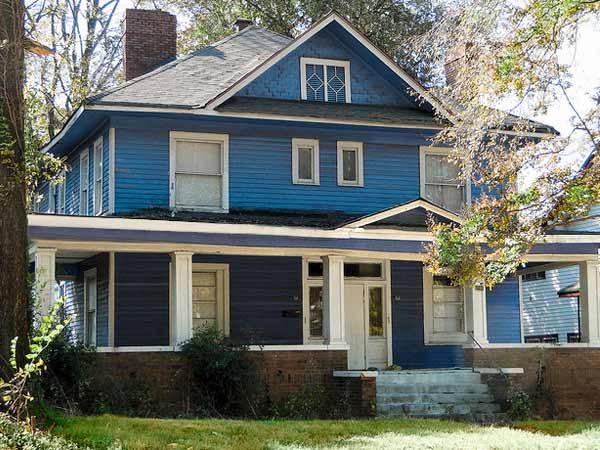
Population: 3,510 in Norwood; 212,413 in the city of Birmingham
House styles: Craftsman, American Foursquare, Neoclassical, Prairie, and various Victorian-era styles
Expect to pay: From $20,000 and up for a fixer-upper; move-in-ready houses can cost $120,000 or more
Only a mile and a half north of downtown Birmingham, Norwood was built as a streetcar suburb in the early 1900s and flourished during the first half of the century. But by the end of the 1900s, many of its mansions and historic properties were in tough shape, thanks to decades of urban flight and the neglect of absentee landlords. Since then, lured by low prices and diverse house styles, young couples and professionals with families began buying homes and fixing them up. And their investment has paid off; the area received historic designation from the city of Birmingham in 2012. Locals are now building on the area’s shiny new image, turning three vacant lots into community orchards and gardens, and hosting a weekly farmers’ market along the serpentine Norwood Boulevard, which winds through the neighborhood. But the most popular outdoor space nearby is the award-winning Railroad Park, nicknamed Birmingham’s Living Room. Built along a former rail viaduct, the park boasts nine acres of lush lawn, along with walls and seating areas made partly from bricks and other materials unearthed during its construction. Here, you can find the perfect spot to sit for a spell before wending your way home.
Among the best for: The South, Bargains, Cottages and Bungalows, Easy Commute, First-Time Buyers, Gardening
Garfield Neighborhood, Phoenix
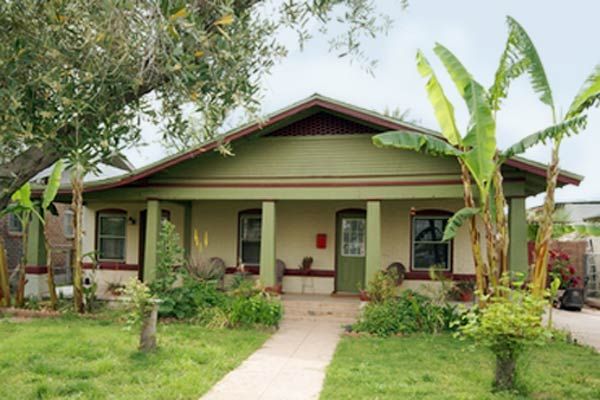
Population: Approximately 2,100 in Garfield; nearly 1.5 million in the city of Phoenix
House styles: Revival styles from the late 19th and early 20th centuries, Craftsman, and vernacular bungalows and ranches
Expect to pay: As little as $50,000 for a short-sale fixer-upper; around $150,000 for a fully rehabbed house
This one-square-mile neighborhood comprises Garfield and North Garfield, two of the largest historic districts in Phoenix; both have been on the National Register since 2010. They date back to the 1880s (the beginning of time around these parts) and were early additions to the old Phoenix townsite. Today it’s an easy stroll down their streets to downtown attractions, such as Symphony Hall or the Roosevelt Row Arts District, top-notch restaurants and taco trucks, the new city-center campuses of Arizona State University and the University of Arizona, and Phoenix’s Valley Metro Light Rail. The locals, a mix of Hispanic families and artistic types, recently created Garfield Community Garden, where neighbors meet on Sundays to sow seeds, pull weeds, and swap all sorts of green-thumb expertise as they raise veggies to distribute to needy communities. The homes here aren’t manses—you won’t find many original houses over 1,200 square feet—but a wee bungalow or cottage needing care can be had cheaply, and the City of Phoenix has funds available for those who are restoring historic properties.
Among the best for: The West, Bargains, Fixer-Uppers, College Towns, Easy Commute, Retirees, First-Time Buyers, Walkability, Gardening
Southside Park, Sacramento, California
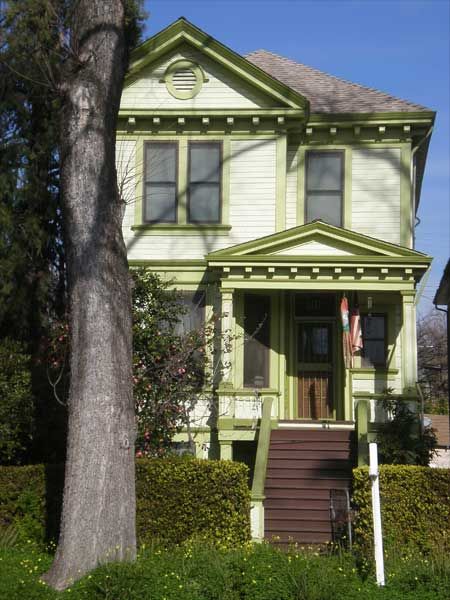
Population: 2,572 in Southside Park; about 472,000 in the city of Sacramento
House styles: Classical and Colonial Revival, Craftsman
Expect to pay: In the vicinity of $250,000 for a house that hasn’t been updated; about $350,000 if the seller has ripped out the carpet and updated the kitchen
Due south of downtown Sacramento sits the neighborhood of Southside Park, a city-designated historic district and diverse neighborhood of immigrants, young singles, families, and the design-obsessed. This isn’t your usual old-house place. The elm-canopied enclave, named for the 15-acre city park at its south end, is a pedestrian-friendly one-square mile with about 1,000 houses, from Craftsman-era bungalows to eyesores built in the late 20th century. “It’s eclectic. Houses would get demolished at random and be replaced with apartments,” says William Burg, a historian and the author of Sacramento’s Southside Park. One of its best-known attractions is the five-acre Sunday Farmers Market, a year-round affair that offers local produce and other fare and attracts neighborhood folks as well as foodies from all over the city. Architecturally, the best properties here include a sprinkling of Queen Annes and Italianates (some were moved here to avoid demolition), covetable bungalows, and a variety of other early-20th-century styles. Those on the market tend to need work but can be scooped up at surprisingly nice prices for California’s capital city.
Among the best for: Editors’ Picks, The West, Fixer-Uppers, Cottages and Bungalows, Easy Commute, Family-Friendly, First-Time Buyers, Walkability, Parks and Recreation
Middletown, Delaware
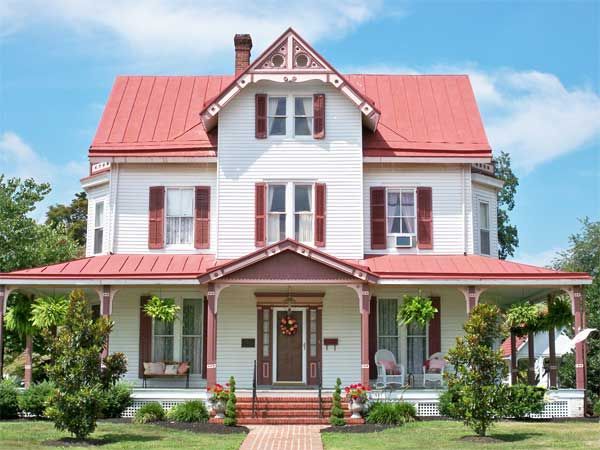
Population: 18,891
House styles: Queen Anne, Second Empire, Carpenter Gothic, and other Victorian-era styles
Expect to pay: About $300,000 for an outdated house that needs revamping; the most spiffed-up properties can cost up to $500,000
Named for its central location on an old oxcart road between two rivers, Middletown began exporting peaches, its major crop, soon after railroad tracks were laid here in 1855. Though the town’s agricultural days have long since passed, locals still salute the area’s heritage during the annual Peach Festival each August, which welcomed 30,000 people last year. And by any measure, Middletown is still thriving. Strong job growth within its borders (Amazon.com opened a fulfillment center here in 2012) and in the region (Wilmington is less than 30 miles away and Philadelphia, 53 miles) are credited for a 300 percent population surge in the first decade of the 21st century; many of the newcomers were young families. But jobs aren’t the only reason people move here. Residents enjoy the laid-back pace, and on any given day you might find some of them strolling in one of Middletown’s two parks or along the historic district, where most period houses are located, including grand mansions built by the town’s first peach magnates. Demand for housing is strong, so if you fall in love with a fixer-upper, don’t wait too long to make an offer.
Among the best for: The Northeast, Victorians, Easy Commute, Family-Friendly, Gardening
Springfield Neighborhood, Jacksonville, Florida
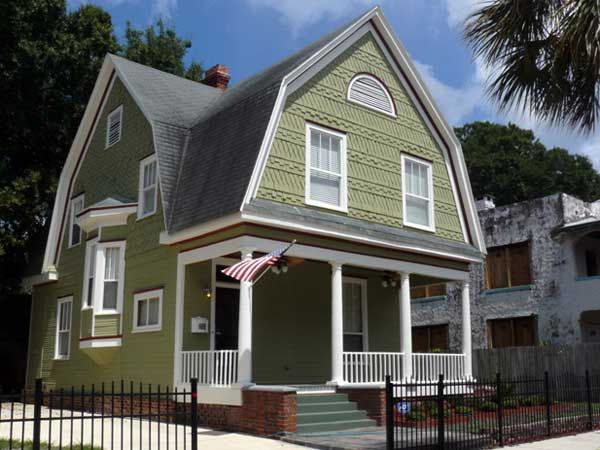
Population: 4,674 in Springfield; 827,908 in the city of Jacksonville
House styles: Early-20th-century types, such as Colonial Revival, Prairie, and Craftsman predominate here; also Queen Anne and various vernacular styles
Expect to pay: As little as $40,000 for a fixer-upper; up-to-date houses cost about $250,000 to $275,000
In 1901, nearly 150 city blocks in downtown Jacksonville were consumed by a factory fire, and many displaced residents fled to Springfield. The community thrived through around 1925, but a combination of urban flight and the area’s rezoning as a business district caused many houses in the neighborhood to decline. Thankfully, locals turned the tide and snagged the area a listing on the National Register of Historic Places in 1987. Today’s buyers will find a charming mix of residences here from as early as the late 1800s, with some cafes and small businesses scattered within walking distance. “There’s an incredible community spirit here,” says resident Kathleen Carignan, who moved to Springfield in 2012. “I found out one of my neighbors had been mowing my lawn before I moved in just because he wanted it to look nice.” City Kidz, a local ice-cream shop, holds after-school workshops to teach financial literacy and entrepreneurial skills, and a program at one of the neighborhood’s two community gardens educates kids about sustainable-food and gardening practices. To us, it sounds like a great place to be a kid or a grown-up
Among the best for: The South, Bargains, Fixer-Uppers, Easy Commute, Retirees, Walkability, Gardening
Old Fourth Ward, Atlanta

Population: 10,440 in Old Fourth Ward; 432,427 in the city of Atlanta
House styles: Queen Anne, Italianate, Colonial Revival, Craftsman bungalow, and shotgun cottages
Expect to pay: About $150,000 for a house that needs TLC; refurbished houses cost from $250,000 to $400,000
Located just a 15-minute walk east of downtown, O4W, as locals sometimes refer to it, was settled after the Civil War by African-American factory workers and working-class whites. It later became a hub of the Civil Rights movement, due in part to its most famous resident: Dr. Martin Luther King Jr. was born and raised here, and his birthplace and gravesite are a part of the Martin Luther King, Jr., National Historic Site. The neighborhood suffered when businesses and homes were demolished in the 1970s for a highway that was never built. But its fortunes are reversing quickly, thanks in large part to the Historic District Development Corporation, a grassroots community organization co-founded by Coretta Scott King, Dr. King’s widow, that has spearheaded the preservation of important homes and buildings in the area.
One big recent boost was the 2011 opening of Historic Fourth Ward Park, a 17-acre oasis boasting fountains, picnic areas, and jogging paths that’s a part of Atlanta’s BeltLine project to connect its neighborhoods with parks and trails. Ponce City Market, another project in the works, will transform a former factory into a vibrant mix of retail, office, and residential spaces. Meanwhile, galleries, bars, and hot-spot restaurants—including local favorite P’cheen—have opened to serve the gentrified and multicultural mix of residents who are fixing up the area’s mostly modest-size period homes. Get in on the action while you can.
Among the best for: Editors’ Picks, The South, Victorians, Easy Commute, American Heritage
Kaimuki Neighborhood, Honolulu
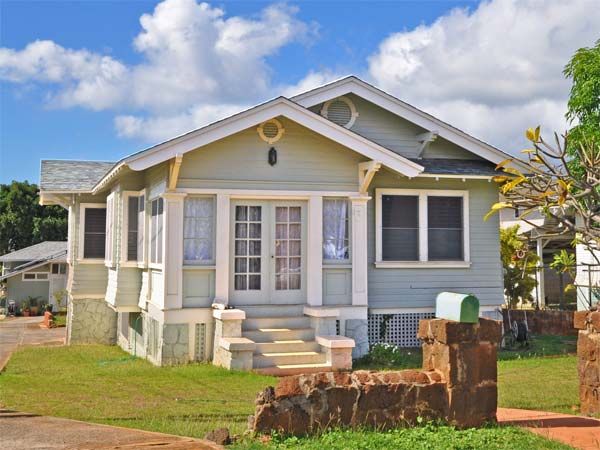
Population: 20,548 in the city of Honolulu
House styles: Bungalows prevail here; some are Craftsman-style while others are known locally as “Hawaiian plantation-style”
Expect to pay: A fixer-upper on a small lot will run you about $500,000, with finished houses costing more
Located between Diamond Head crater and the Koolau mountain range, this Honolulu neighborhood was a watch station during the 19th century for spotting enemies arriving by sea. It had a brief stint as an ostrich farm before being sold to developers for $20,000 in 1898. They brought in plumbing and infrastructure to transform the area into a residential enclave, which it has remained ever since. Today, many residents are bohemians and artist types who want to preserve Kaimuki’s low-key charm and prevent builders from replacing old structures with soulless McMansions and duplexes. Dining out is a notable pastime here; mom-and-pop restaurants that have been around for 70 years or longer line Waialae Avenue, the town’s first road; it was paved in 1905 and connects the area with downtown Honolulu. Many of the historic houses were built with lava-rock foundations and with single-wall construction without insulation, a technique commonly used in older Hawaiian homes because of the mild climate and hard-to-come-by building materials. Some houses are modest on detail, while others have more elaborate Craftsman-inspired touches. “There are several blocks here built in the 1930s and 1940s that look untouched today,” says resident Lori Yamada, who adds that neighbors look after one other and share fruit from the trees on their property. Add in Hawaii’s beaches and opportunities for outdoor adventures, and you’ve got the makings of a tropical paradise.
Among the best for: The West, Fixer-Uppers, Cottages and Bungalows, Waterfront, Easy Commute, Family-Friendly, Walkability, Gardening, Parks and Recreation
Bronzeville Neighborhood, Chicago
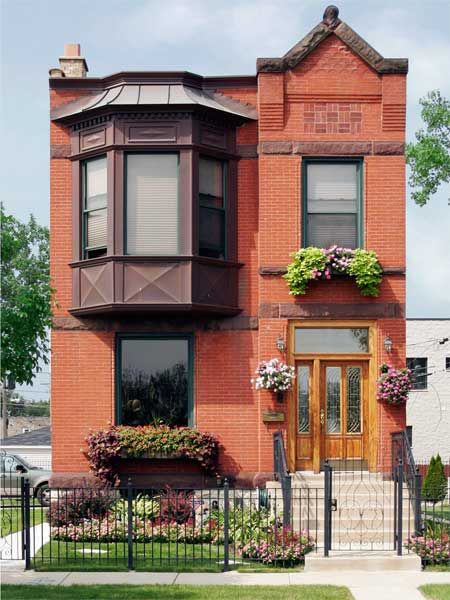
Population: 4,566 in Bronzeville; 2,707,120 in Chicago
House styles: Most period houses date from 1881 to 1910 and include Queen Annes and Richardsonian Romanesques; they’re built largely from stone, a legacy of the Great Chicago Fire of 1871
Expect to pay: About $50,000 for a fixer-upper; $275,000 and up for a refurbished home
When Southern blacks migrated north in search of work in the early 20th century, thousands settled in this community on Chicago’s South Side. In time, Bronzeville became a hotbed of activists, musicians, artists, and writers whose work has shaped the African-American urban experience, including such luminaries as Richard Wright, Louis Armstrong, Lorraine Hansberry, Muddy Waters, and Buddy Guy. But throughout the 1960s and 1970s, many residents of its high-rise public housing left to find less-crowded quarters in the suburbs. Thankfully, the neighborhood’s landscape began shifting from the mid-1990s through 2007, when these neglected projects were torn down, paving the way for smarter development and the refurbishment of its rich stock of period houses, most of which predate the Great Migration.
Today, middle-class black families are moving back Bronzeville to reclaim it as a historic, urban neighborhood, and bus tours make the rounds to its many points of interest, including trails for the Underground Railroad. From here, you can get to the center of the downtown Loop by car in less than 15 minutes or by riding the elevated train’s Green Line; since 2011, there’s been a stop here for a commuter train that connects the city to its southern suburbs. And it’s just a short bike ride or walk to many of the Windy City’s A-list attractions, including the Art Institute, the Museum of Science and Industry, and Lake Michigan. Sweet home Chicago, indeed.
Among the best for: Editors’ Picks, The Midwest, Bargains, Victorians, Easy Commute, First-Time Buyers, American Heritage
Le Mars, Iowa
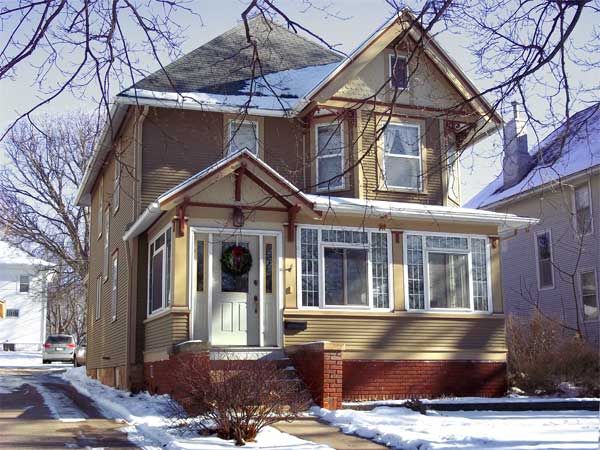
Population: 9,826
House styles: A wide mix, including American Foursquare and Craftsman
Expect to pay: About $40,000 to $60,000 for a house in need of work; up to $260,000 for a refurbished home
Formally established and named in 1869, this small midwestern outpost 25 miles from Sioux City was a magnet for pioneers of British, German, and Dutch descent, who ran its farms and businesses in the late 19th and early 20th centuries. These days, family-friendly Le Mars is best known for its top export: ice cream. Local producer Wells Enterprises, the century-old company that makes the famed Blue Bunny brand, churns out more than 100-million gallons of the sweet stuff each year; its two local production companies employ many of the area’s residents. The Plymouth County Fair draws thousands of attendees from around the state for livestock competitions and horticultural exhibits. Period homes here are concentrated in the Foster Park Historic District and range from relatively modest bungalows built for former industrial workers to larger, more ornate homes that industry magnates enjoyed. The local historic commission and Main Street program ensure that architectural treasures are kept shipshape. If you’re a DIY die-hard, the fixer-uppers here offer plenty of projects for honing your skills.
Among the best for: The Midwest, Small Towns, Easy Commute, Retirees, Family-Friendly, Walkability, Gardening, Parks and Recreation, American Heritage
Kenwick Neighborhood, Lexington, Kentucky
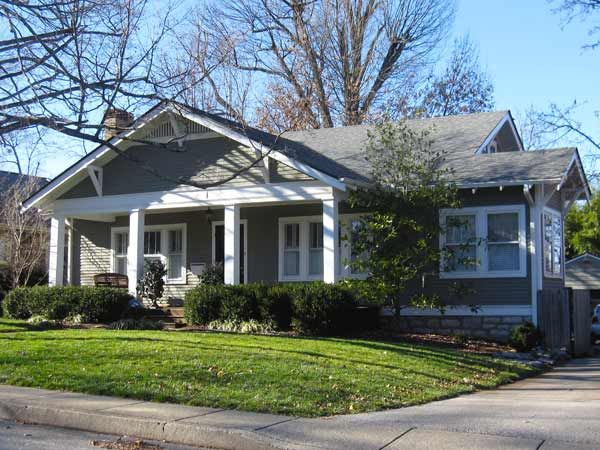
Population: 1,613 in Kenwick; 295,803 in the city of Lexington
House styles: Craftsman bungalows are predominant, with a few Cape Cod and Victorian-era houses mixed in
Expect to pay: $125,000 to $300,000, depending on the house’s size and condition
Once a rural family estate and farm on the outskirts of Lexington proper, Kenwick was formally established in 1909, when its heirs divided the land into small residential lots, turning it into one of the city’s first suburbs for middle- and working-class families. Now this neighborhood is gaining renown for some of the earliest houses built on those lots: handsome bungalows in the Craftsman style. Tight-knit residents have developed a tour that showcases a dozen or so well-kept examples, and both the tour and the area itself are gaining traction locally. “These are all unique homes, lovingly cared for by their owners,” says Sara Constantine, a member of the Kenwick Neighborhood Association. Living here offers convenience as well as low-key charm; it’s a quick trip by car or trolley to Lexington’s many cultural highlights, from the numerous arts and music venues at the University of Kentucky to the venerable Keeneland, one of Lexington’s oldest racetracks, which opened in 1936.
Among the best for: The South, Cottages and Bungalows, College Towns, Easy Commute, Retirees
Locust Point Neighborhood, Baltimore, Maryland

Population: 2,138 in Locust Point; 621,342 in the city of Baltimore
House styles: Rowhouses dating from the mid- to late 1800s; many are covered in formstone, a stucco-based cladding once popular in the area
Expect to pay: $175,000 and higher for a fixer-upper; $275,000 or more for a house in move-in condition
Populated by a mix of young singles and multigenerational blue-collar locals, Locust Point has a gritty feel that celebrates its industrial past. It’s anchored by the Domino’s sugar refinery, the last major manufacturer still operating in Baltimore’s Inner Harbor. “When the wind blows just right, it smells like toasted marshmallows here,” says resident Laura Rodini. The neighborhood suffered a big blow when many nearby manufacturers closed down in the middle of the 20th century, but it began a long, slow turnaround in the late 1960s and the 1970s, when the mayor’s office sold crumbling 19th-century rowhouses for $1 on the promise that owners would fix them up.
Though some of the brick facades have been restored, many of the houses are still clad with formstone, a type of stucco that was popular here in the 1950s and is colored and shaped to resemble masonry; some consider it an affront to the area’s original architecture, but there’s no question that it gives Locust Point’s houses a distinctive look and a low-key charm of their own. Fort Avenue, the neighborhood’s main drag, has a mix of local bars and crab houses, terminating at historic Fort McHenry, the inspiration for Francis Scott Key’s “The Star-Spangled Banner.” Up Key Highway, you’ll find the American Visionary Art Museum, which is devoted to the work of self-taught and outsider artists—just the kind of place that would make Baltimore native and avant-garde filmmaker John Waters proud.
Among the best for: The Northeast, Waterfront, Easy Commute, First-Time Buyers, American Heritage
Frogtown, St. Paul, Minnesota
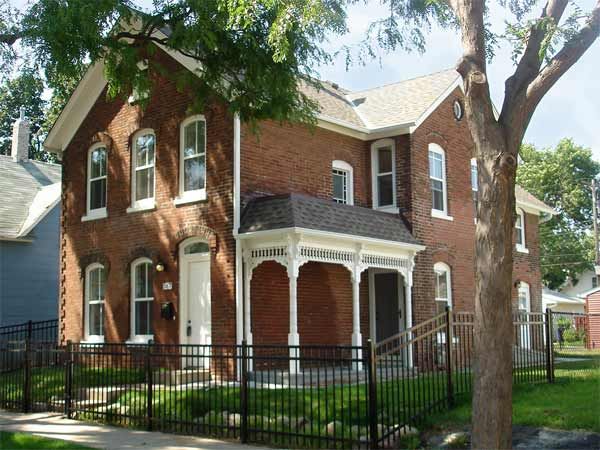
Population: About 15,000 in Frogtown; 288,448 in the city of St. Paul
House styles: Colonial Revival, Queen Anne, Craftsman, Prairie, Italianate, and Tudor Revival
Expect to pay: $40,000 or higher for a fixer-upper; about $140,000 for a restored home
Frogtown was built by German-Bohemians in 1860 on land just south of swampy Lake Lafond, where the croaking and chirping of its namesake amphibians was so loud at night that the locals called the area Froschburg (“Frog City”). Always a working-class immigrant community, many of its period houses were built in the 1880s and 1890s by early residents, the highly skilled masons and builders who also worked on mansions in St. Paul’s more affluent neighborhoods. It’s still populated by lower- and middle-income residents, albeit largely of Hmong, Cambodian, and Vietnamese descent, and the number of citizens who hail from Somali and Karen is growing. Not surprisingly, University Avenue, the main commercial strip, has a lively mix of ethnic restaurants and is the center point of the Green Line, a light commuter rail opening in 2014 that will connect the downtowns of Minneapolis and St. Paul. Right now, the area’s modest-size houses are reasonably priced, and chances are you’ll find neighbors willing to lend a hand with your renovation. “Our goal is to preserve the area’s historic character while maintaining affordability,” says Tait Danielson-Castillo, executive director of the Frogtown Neighborhood Association. As locals like to say, “Frogtown is a place to start, and a place to stay.”
Among the best for: The Midwest, Victorians, Easy Commute, Family-Friendly, First-Time Buyers, Walkability
Belhaven Neighborhood, Jackson, Mississippi
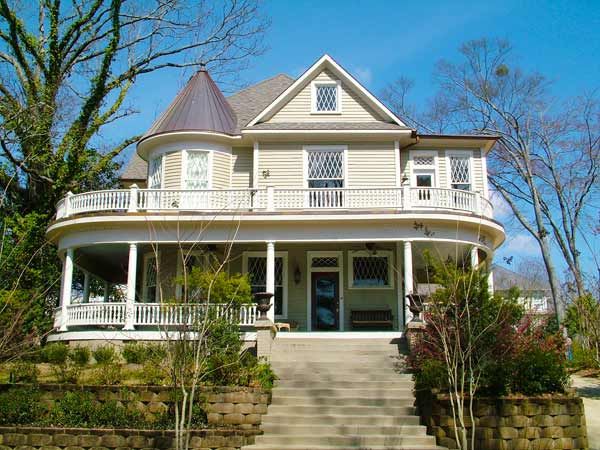
Population: About 8,000 in Belhaven; 173,514 in the city of Jackson
House styles: A wide variety from the 19th and early 20th centuries, including Queen Anne, Italianate, Colonial Revival, Tudor Revival, Craftsman, and others
Expect to pay: Houses that need work run about $150,000; a renovated beauty can cost up to $500,000
The origins of Belhaven, one of Jackson’s oldest neighborhoods, lie in the founding of Belhaven College (now Belhaven University) in 1883. The campus was originally nestled in the countryside, but residences grew up around it when a trolley system connecting the area to other parts of Jackson was added in the early 20th century. The university is still the heart of this neighborhood, so it’s no surprise that students, as well as academics and other professionals and their families, call it home. The walkable, tree-lined streets, chock-full of houses and buildings in many different styles that date from the late 1800s, are a testament to the area’s steady popularity over the decades; local historic standards will keep it what locals call “a happy hodgepodge” for years to come. Serious old-house buffs can take a self-guided architectural tour, while literary enthusiasts can check out author Eudora Welty’s Tudor Revival home and garden on Pinehurst Street. Or, if nightlife is your thing, take a two-mile car ride to downtown Jackson and enjoy some live music at one of its renowned blues clubs. That’s what you get in Belhaven: all the charms of a small Southern town within a vibrant city.
Among the best for: The South, College Towns, Easy Commute, Walkability, American Heritage
Pendleton Heights, Kansas City, Missouri
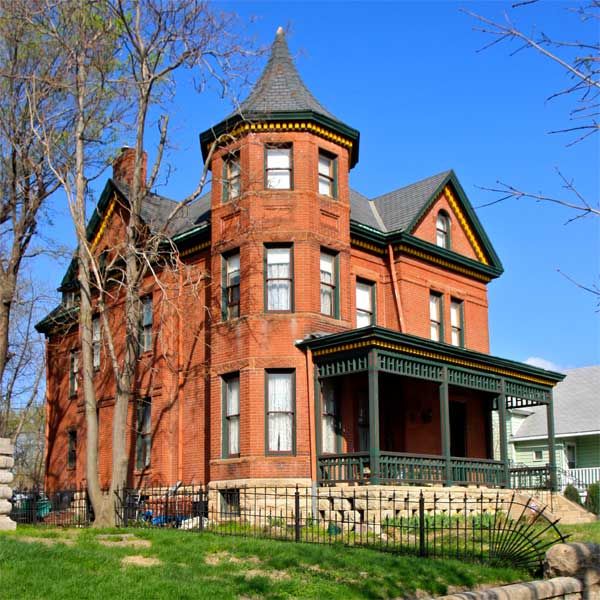
Population: 3,668 in Pendleton Heights; 463,202 in the city of Kansas City
House styles: Queen Anne, Richardsonian Romanesque, Shingle style, and Folk Victorian; there’s also a sprinkling of Italianate, Craftsman, and other styles.
Expect to pay: As little as $30,000 for a small fixer-upper; larger, move-in ready houses can cost $250,000 or more
Ask just about anyone in Pendleton Heights, and they’ll tell you that they moved here for the beautiful Victorian-era architecture, affordability, or the five-minute drive to downtown but stayed for the sense of community. Residents sit on their front porches, stop one another on the street to chat, and share house keys. Maple and Kessler Parks constitute about one-third of the neighborhood’s footprint—one of the largest green-space percentages in the city—and the local community garden is a popular, informal gathering spot where neighbors sow veggies side by side. But for those who aren’t ready to leave the city’s nightlife behind, it’s a five-minute drive to the new Power & Light District, an eight-block downtown area with more than 50 restaurants, bars, shops, and entertainment venues. Originally developed as Kansas City’s first suburb, the neighborhood is filling up with artists, singles, and young families leaving their converted-warehouse lofts downtown for more breathing room. Kansas City, here we come.
Among the best for: The Midwest, Bargains, Victorians, Easy Commute, First-Time Buyers
The John S. Park Historic District, Las Vegas
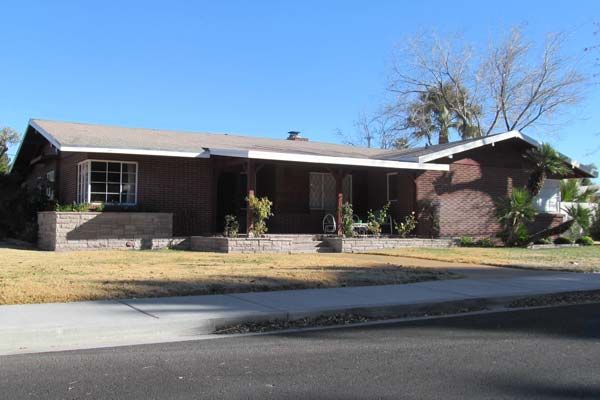
Population: 2,196 in John S. Park; 583,756 in the city of Las Vegas
House styles: Revival styles from the 1930s, ranches built during the post–World War II era, and mid-century modern
Expect to pay: From $80,000 to $250,000, depending on condition; most houses come on the market as fixer-uppers
In 1999, this neighborhood a mile southeast of the neon-lit streets of downtown Las Vegas made headlines when residents banded together to defeat a developer’s proposal to build a cruise-ship-shaped, Titanic-themed hotel just west of the area. The John S. Park Neighborhood Association has worked tirelessly since then to preserve the area’s low-rise, mid-century charm; among other victories, they successfully lobbied to create a 60-foot height cap on all new construction in the area. Most of the houses here were built between 1931 and 1956 and are far from cookie-cutter. “There’s a range of styles, and even those of the same style are not built exactly alike,” says Jack Levine, a local Realtor who has noticed a recent influx of artists, musicians, and young professionals. With its idyllic, tree-lined streets and namesake neighborhood pocket park, buyers won’t even know they’re practically in the middle of Sin City.
Among the best for: The West, Bargains, Fixer-Uppers, Easy Commute, Family-Friendly, First-Time Buyers
Mesta Park, Oklahoma City, Oklahoma

Population: About 1,740 in Mesta Park; 579,999 in Oklahoma City
House styles: Prairie is the dominant style here; there are also Craftsmans, vernacular bungalows, and a few Tudor Revivals
Expect to pay: Bungalows cost $120,000 to $200,000; larger houses cost $225,000 to $425,000
Back in 1902, this area north of downtown was called University Addition; it had been created to build up the blocks around Epworth University, and a streetcar system once connected it to other parts of the city. Epworth has since changed names and relocated, and the streetcars run no longer, but the neighborhood now known as Mesta Park continues to thrive. This enclave of historic houses, most built during the first half of the 1900s, boasts an amenity—sidewalks—that is surprisingly absent from many residential areas of Oklahoma City. Perhaps that’s why on warmer days, you’ll find homeowners relaxing on their generous front porches, where they can enjoy the weather and take in the foot traffic. There are some eateries and shops along Northwest 23rd Street, but it’s also a quick commute from Mesta Park to downtown Oklahoma City, where you’ll find theaters, sports venues (including the arena for the Oklahoma City Thunder, the city’s popular NBA team), and the American Banjo Museum, which houses the largest public collection of these instruments in the world. Prices for older houses are a bit lower here compared with neighboring historic areas, so it’s a good spot for finding an early-20th-century gem that won’t break the bank.
Among the best for: The South, Cottages and Bungalows, Easy Commute, Retirees, Family-Friendly
St. Johns Neighborhood, Portland, Oregon
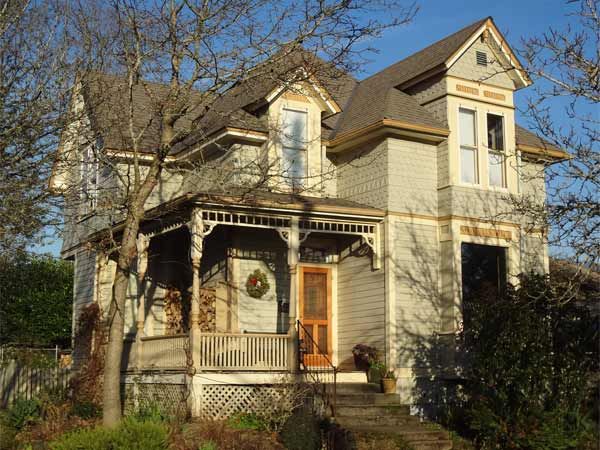
Population: About 12,207 in St. Johns; nearly 583,000 in the city of Portland
House styles: Craftsman bungalow, Cape Cod, mid-century ranch, and various vernacular styles
Expect to pay: About $185,000 for a wreck with potential; well-restored houses cost around $300,000
St. Johns feels more like a rough-and-tumble small town than a neighborhood of shiny, happy Portland. Perhaps that’s because in a former life, that’s exactly what it was. First settled in 1850 and located at the tip of the peninsula formed by the confluence of the Willamette and Columbia Rivers, St. Johns was an incorporated city before citizens voted to be annexed by Portland in 1915. This working-class enclave is seeing a wave of newcomers, as thirtysomething couples with or without kids flock here for affordable homes. Though many of the houses are truly handyman specials, the best finds are in Cathedral Park, a neighborhood-within-a-neighborhood that flanks a waterfront green space of the same name; its streets are lined with Craftsman bungalows and vernacular styles, punctuated by the occasional Queen Anne or Dutch Colonial. Recent transplants have been happily supporting local stalwart businesses, like Wayne’s Barber Shop and Tulip Bakery, even as they open shops and eateries of their own. An active neighborhood association; an easy commute to downtown via bike, bus, or (gasp!) car; and views of the waterfront and the spectacular St. Johns Bridge make this area feel downright promising.
Among the best for: Editors’ Picks, The West, Fixer-Uppers, Cottages and Bungalows, Waterfront, Easy Commute, Family-Friendly, First-Time Buyers
Tacony Neighborhood, Philadelphia

Population: About 6,000 in Tacony; approximately 1.54 million in the city of Philadelphia
House styles: Brick and wood-sided rowhouses, two-families, and large single-family houses in the Queen Anne and Georgian styles
Expect to pay: $40,000 and up for a rowhouse or $65,000-plus for a twin needing work. Single-family homes will set you back $125,000 to $200,000
This area has recently been touting its Hoagie Trail, a strand of sandwich shops packaged by the Historic Tacony Revitalization Project to highlight the spiffed-up main drag, Torresdale Avenue. And why not? The neighborhood was built on business. Sitting on the Delaware River seven miles northeast of Philadelphia’s city center, Tacony got busy in the mid-19th century with the arrival of the Philadelphia and Trenton Railroad and the 1854 Consolidation Act, which turned Tacony over to the City of Philadelphia.
Then along came Henry Disston, a manufacturer of saws. Over the next century, he and his descendants amassed 400 acres to create the Henry Disston & Sons company town, offering livelihoods and housing to employees at all levels. The company was sold in 1955, but the houses remain: some 1,400 “singles” (single family), “twins” (two-families), and rowhouses, built beginning in 1876. Many have pressed-metal accents, inlaid hardwood floors, open porches, and big yards. Though some properties in the area need work, you can still score a single-family fixer-upper for under $200,000 inside the city limits. We’ll bite.
Among the best for: The Northeast, Bargains, Fixer-Uppers, Waterfront, Easy Commute
York, South Carolina
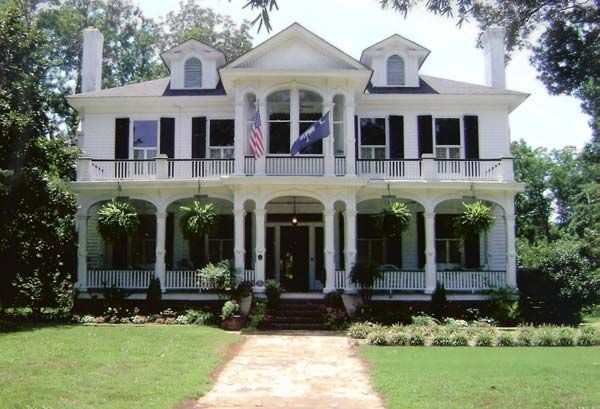
Population: 7,888
House styles: A diverse mix, including Greek Revival, Prairie, Colonial Revival, Queen Anne, and Carpenter Gothic. Some houses in the historic district date back to the mid-1700s
Expect to pay: Homes that need TLC start around $90,000; you’ll spend $300,000 or more on a fixed-up beauty
This charming city is home to a welcoming blend of Old South natives, Yankee transplants, and, increasingly, a growing community of potters and painters. Founded in the early 1750s, York was established by settlers from Pennsylvania and Virginia who sought out its temperate climate to escape cold mountain winters and low-country humidity; they tended the area’s cotton fields and in time turned it into a manufacturing hub for textiles. Though this industry no longer supports York, there are ample job prospects in banking, distribution, and other fields in Charlotte, North Carolina, 30 miles to the southwest. The city’s historic district is one of the largest in the state, second only to Charleston’s, and locals describe themselves as a fiercely proud and tight-knit bunch. “It’s like Mayberry,” says Karen Fritz, who moved here recently from Las Vegas. “Downtown has old shops and exciting new businesses, and everyone knows each other.” The main artery of the city center, North Congress Street, is home to the 100-year-old Sylvia Theater, a restaurant owned by a Cordon Bleu–trained chef, and an assortment of other eateries as well as antiques stores and cafes. And with an international airport less than a half hour away, residents have the benefit of being globally connected without sacrificing an enviable small-town lifestyle.
Among the best for: The South, Small Towns, Easy Commute, Retirees, Family-Friendly, American Heritage
Glenbrook Valley Neighborhood, Houston
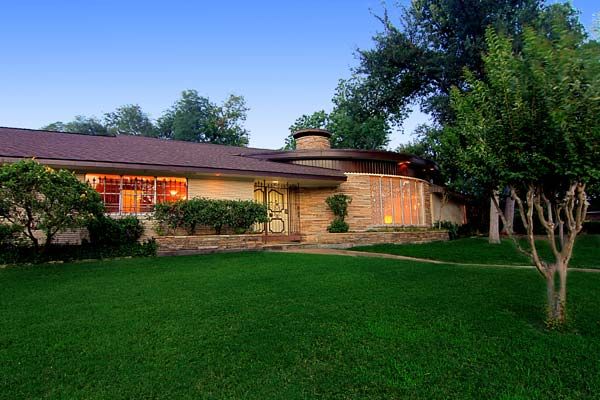
Population: About 3,140 in Glenbrook Valley; about 2.15 million in the city of Houston
House styles: American ranch, mid-century modern
Expect to pay: Less than $100,000 for a smaller ranch needing work; up to $300,000 for a mid-century-modern sparkler
The word swanky comes to mind when you survey the daring roof lines and sweeping lawns of Glenbrook Valley, a neighborhood that would have tempted Mad Men’s Don Draper had he landed a Big Oil account. This planned community, which was rolled out after Houston’s Gulf Freeway began funneling downtowners to greener subdivisions, contains more than 1,200 houses built between 1953 and 1962. Noted landscape architects Hare and Hare, who lent their genius to many of the city’s public spaces, designed the development, which boasted big lots on which buyers custom-built their dream homes—no two are exactly alike. “Our homes are our hangouts. They were designed for entertaining,” says resident, Realtor, and de facto area historian Robert Searcy, who adds that common features include party rooms and built-in martini bars. Many old-guarders live on here happily, serving the Civic Club. But since 2011, when Glenbrook Valley was anointed as the first post-war historic district by both the City of Houston and the State of Texas, the neighborhood has been discovered by design-savvy young Houstonians with a surprising appreciation for 1950s-era powder-pink bathroom tile. You’ll have to fight them to get a piece of the action here.
Among the best for: Editors’ Picks, The South, Bargains, Fixer-Uppers, Easy Commute, Retirees, First-Time Buyers, Gardening
Provo, Utah
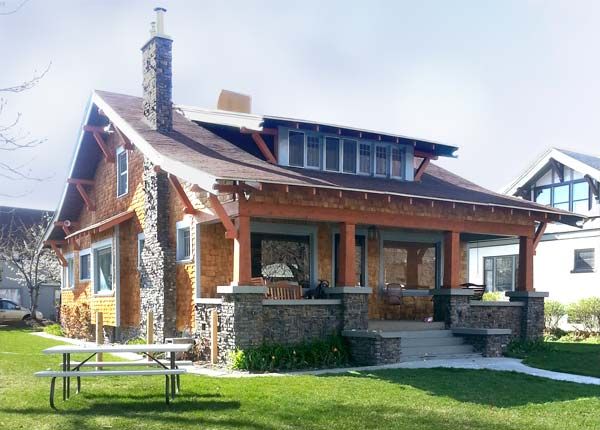
Population: 115,321
House styles: Craftsman bungalows, brick ranches built in the 1950s and 1960s, and Victorian-era mansions
Expect to pay: $150,000 and up for a fixer-upper; $400,000 or more for a spiffed-up historic mansion
Settled in 1849 by Mormon missionaries from Salt Lake City and long famous as home to Brigham Young University, Provo is a rapidly diversifying metropolis that has doubled in population in the past 10 years. Its robust business climate has largely insulated the city from the economic travails that have plagued much of the country since the Great Recession. There are numerous tech companies in the area, including software giant Adobe, which is expanding its operations some 20 miles away. Downtown’s Center Street is pedestrian-friendly and loaded with locals services and a couple of arts centers, and foodies are drawn to more than 50 independently owned restaurants in the center of the city. Those who prefer the great outdoors will also find plenty to do, as Provo is nestled between the Wasatch Mountains and the 250-square-mile Utah Lake. Though there are period houses scattered throughout the city, young DIYers have been setting their sights on the Franklin neighborhood, which abuts downtown from the west and is rapidly filling up with owners who are busy landscaping their yards and applying fresh coats of paint to their fixer-uppers. Could you be their next neighbor?
Among the best for: The West, College Towns, Easy Commute, First-Time Buyers, Walkability, Parks and Recreation
Stoughton, Wisconsin
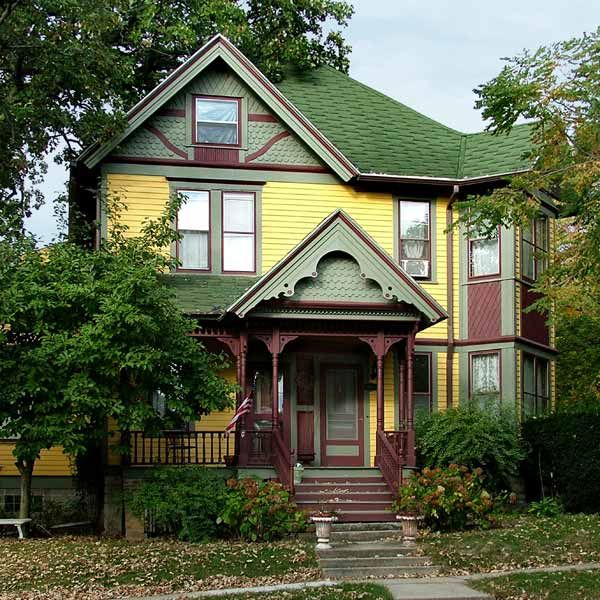
Population: 12,817
House styles: Queen Anne, Italianate, American Foursquare, Cape Cod, and Craftsman
Expect to pay: $150,000 to $170,000 for a house that needs TLC; restored houses typically cost around $350,000
Just 15 miles south of Madison, this idyllic, thriving community defies the notion that small towns are on the decline. Founded in 1847, it blossomed two decades later when Norwegian immigrants flocked here to work in the fields and factories along the Yahara River, then known as the Catfish River. Today, Stoughton’s four residential historic districts and perfectly preserved downtown area give it an air of bygone times. “There is a lot going on here, and we found a beautiful 1904 Queen Anne that we could actually afford,” says homeowner Peggy Veregin, who moved here two years ago from the Chicago area. Main Street, lined with Norwegian flags to this day, is a bustling mix of antiques shops, boutiques, and eateries, as well as a live-stage theater and the 1901 Stoughton Opera House. At the annual Syttende Mai (Norwegian for “May 17th”) festival, locals still celebrate the signing of Norway’s constitution with a parade and by dressing in authentic costumes and gathering to folk-dance, listen to music, and compete in the Ugliest Troll Drawing contest. This small town knows how to live big.
Among the best for: The Midwest, Cottages and Bungalows, Victorians, Waterfront, Small Towns, Easy Commute, Family-Friendly
Petworth Neighborhood, Washington, D.C.
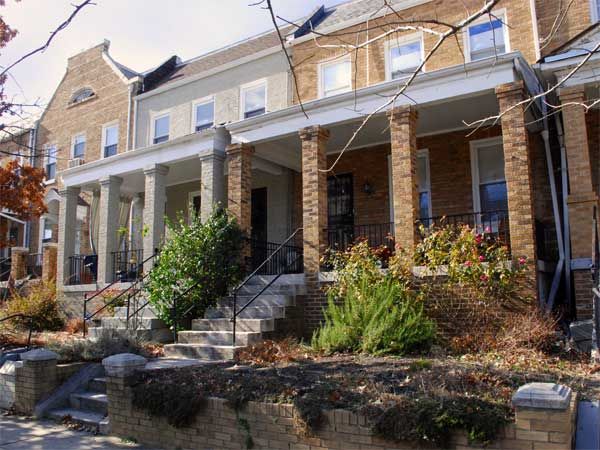
Population: 18,243 in Petworth; 617,996 in the District
House styles: The iconic type here is the Wardman-style rowhouse, named for architect Harry Wardman. Following World War I, his firm designed 2,000 rowhouses, with elevated porches, for government workers
Expect to pay: $300,000 and up for a house needing work; as much as $600,000 for a restored house
There’s no question that our nation’s capital pulled off an epic turnaround in the past two decades. Once considered highly unsafe, its historic neighborhoods are now among the priciest and most desirable in the country. But relative bargains still exist in Petworth, a middle-class enclave built in the early 20th century in the District’s Northwest quadrant. “Part of the reason that homes are affordable here is that they’re simple, reflecting the lifestyle of their earliest owners,” says resident Adam Mazmanian.
Though the area is still emerging from decades of crime and neglect, buyers from all walks of life have begun snapping up properties and giving them much-needed improvements. Petworth is served by Metro’s Green Line, and Georgia Avenue, the main road, reflects the shifting fortunes of its residents; Qualia Coffee, the neighborhood hub, is a small-batch coffee-roasting company that many say pours the best java in the District. Other recent new businesses include an organic supermarket and a trendy French bistro named Chez Billy. The time to score a fixer-upper here is now, while prices are still reasonable.
Among the best for: Editors’ Picks, The Northeast, Fixer-Uppers, Easy Commute, Walkability
Inglewood, Calgary, Alberta, Canada
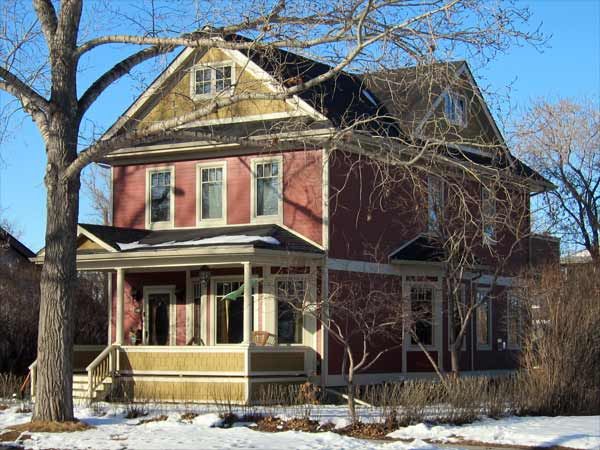
Population: 3,473 in Inglewood; 1,090,936 in the city of Calgary
House styles: Queen Anne, Shingle, and Craftsman, among others
Expect to pay: About $500,000 for a fixer-upper; houses in good shape can cost much more
Nestled between the Elbow and Bow Rivers, the area now called Inglewood (formerly known as East Calgary or Brewery Flats) was established in 1875 after the completion of Fort Calgary, nearly 20 years before Calgary itself was incorporated as a city. When the Canadian Pacific Railway reached this area, in 1883, settlers who arrived by train built houses there through the early 1910s. Those homes are still intact, with some in pristine shape and others that, frankly, have seen better days. You can check out the nicer ones during Century Homes Calgary, a citywide summertime tour featuring the area’s most elegant and well-preserved houses. Though downtown Calgary is just over two miles away, Inglewood itself boasts an abundance of shops, art galleries, and dining locales, as well as Festival Hall, a popular live-music venue. And some 30,000 people participate annually in the recently revived Inglewood Sunfest, a free neighborhood event that takes place each summer and features street performers, a pie-eating contest, and a kids’ zone with face painting and balloon artists. If you’ve got the means, this community of families and artists is a lovely spot to settle down in.
for FC:
Among the best for: Canada, Victorians, Easy Commute, Walkability
Crescentwood Neighborhood , Winnipeg, Manitoba, Canada
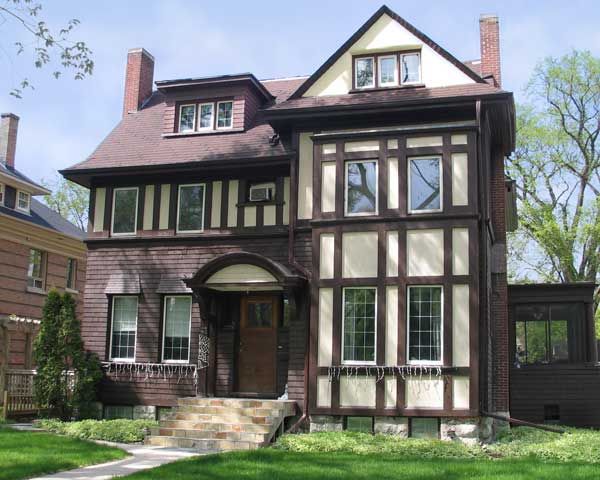
Population: About 2,735 of Winnipeg’s approximately 700,000 residents
House styles: Queen Anne, Georgian, Tudor Revival, and Dutch Colonial Revival are the most common
Expect to pay: At least $400,000; most houses here are move-in ready
Located in Winnipeg, just south of the Assiniboine River and west of the Red River, Crescentwood was first conceived by real-estate developer C.H. Enderton in 1902 as a place with “the most attractive residences in the city,” according to his newspaper ads of the time. Indeed, as these houses were built, owners eagerly snapped them up until a recession in 1913 halted construction. Today, Crescentwood’s century-old streets are lined with towering century-old oak trees, and residents have put great care into restoring their homes, says resident Barbara Parke, who has lived in the area since 1975. John Orlikow, her neighbor and a member of the Winnipeg City Council, agrees. “There’s a lot of respect for the history of the neighborhood. People are very proud to live here,” he says. That extends to public spaces as well. When the beloved Enderton Park (known colloquially as “Peanut Park”) needed a spruce-up seven years ago, volunteers secured over $250,000 in funding for landscaping, a new playground, and new benches that looked like the original ones seen in historical photographs. You won’t find many bargains or fixer-uppers here, but for what you’ll pay, you’ll get a large house that’s full of original details inside and out.
Among the best for: Canada, Easy Commute, Retirees, Family-Friendly
Canning, Nova Scotia, Canada
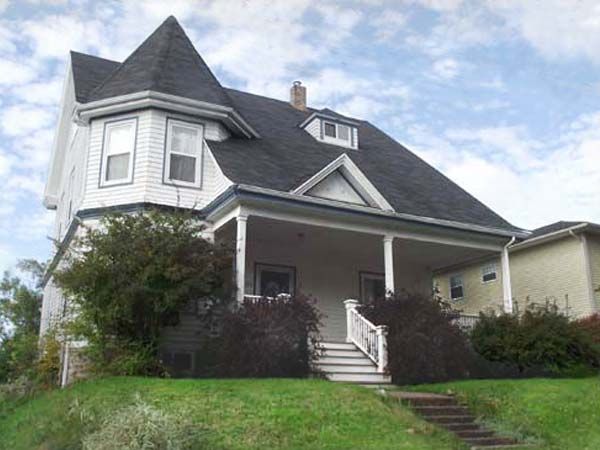
Population: 761
House styles: Farmhouse-style houses and a mix of other styles, including Georgian, Craftsman, and mid-19th-century Italianate
Expect to pay: In the low $200,000s for a fixer-upper; remodeled period houses cost around $400,000
While Halifax, the province’s capital, is heralded as a “city of the future,” the agricultural village of Canning, about an hour’s drive northwest, proudly clings to a more traditional way of life. Though residents of this once-bustling shipping and rail hub have access to conveniences such as big-box stores, you’re more likely to find them frequenting local shops downtown, perusing fresh produce at one of the area’s year-round farmers’ markets or sampling the latest vintages from the local Blomidon Estate Winery. Canning also proudly hosts an annual Eagle Watch in January and February that features a daily pancake-and-sausage breakfast as an extra treat for the thousands of birders who flock to the area for the occasion. Many of the residents here, as in other farm towns and villages in Nova Scotia’s Annapolis Valley, are self-employed. But Canning’s relatively low real-estate prices, plus its proximity to Halifax as well as the smaller towns of Kentville and Wolfville, make it an attractive choice for commuters, too.
Among the best for: Canada, Small Towns, Easy Commute, Retirees, First-Time Buyers
Saint-Roch, Quebec City, Quebec, Canada
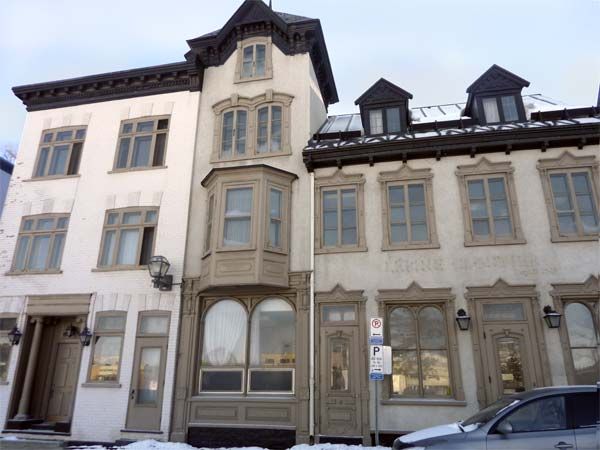
Population: 7,585 in Saint-Roch; 516,622 in Quebec City
House styles: French Colonial and various Victorian-era styles
Expect to pay: A house that needs a lot of TLC could go for $350,000; one of the 200-year-old houses on St. Vallier Street could go for as much as $1 million
You could call Saint-Roch the Silicon Valley of Quebec City. Local Internet and video-game companies employ some 3,000 people in the area. But this progressive enclave within predominantly French-speaking Quebec City has plenty of history, too. Located two blocks northwest of the walled-off Old Quebec, Saint-Roch is home to the oldest merchant street in Quebec: St. Joseph, which dates back 400 years as a fur-trading post along the St. Charles River. During the past decade-plus, this formerly rundown working-class area has undergone a massive renovation to draw residents back in—and the results are hard to argue with. The Jardin de Saint-Roch, a public park with Japanese fountains and French botanical design, now anchors the neighborhood, and St. Joseph is again a bustling main artery lined with dozens of restaurants, cafes, boutiques, and bakeries that rival any you’d find in Paris. “It’s like traveling to France but staying in the same time zone,” says resident Stephane Sabourin. Though bargain-hunting buyers may be put off by the house prices, Saint-Roch’s housing market has remained strong, so an investment here is likely to maintain its value down the road.
Among the best for: Canada, Easy Commute, Walkability